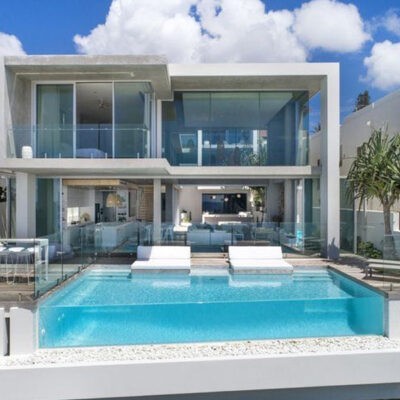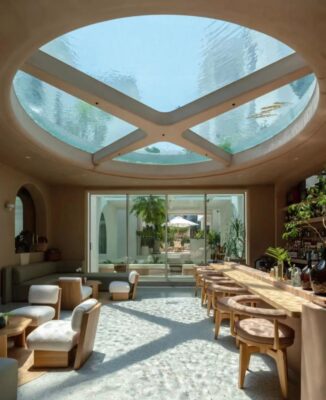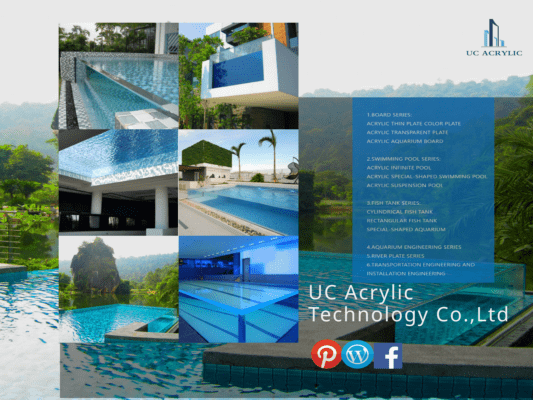Understanding Acrylic Swimming Pools: Materials, Bonding, and Maintenance
Acrylic swimming pools are a luxurious and innovative choice for both recreational and competitive swimming. Built on the ground, these pools can be indoor or outdoor, with water temperatures maintained between 27°C to 28°C. They are equipped with filtration and disinfection systems to ensure clean and safe water. This article explores the material characteristics, bonding methods, and maintenance of acrylic swimming pools.
Acrylic Swimming Pool Material Characteristics
Acrylic, also known as PMMA or plexiglass, is a durable and versatile material widely used in construction. Its key features include:
- Crystal Transparency:
- Light transmittance of 92% or higher, offering a clear and vibrant view.
- Soft light and excellent dyeing capabilities for aesthetic appeal.
- Durability and Weather Resistance:
- High surface hardness, gloss, and resistance to extreme temperatures.
- Excellent chemical stability and weather resistance.
- Lightweight and Safe:
- Half the density of glass, making it lightweight and easy to handle.
- Shatter-resistant, ensuring safety even if broken.
- Ease of Processing:
- Can be thermoformed or machined into various shapes and designs.
- Suitable for seamless bonding, allowing for large, custom panels.
- Eco-Friendly and Long-Lasting:
- Resistant to wear and chemicals, reducing the need for frequent replacements.
- Combustible but non-spontaneous, ensuring safety in various conditions.
For more on acrylic materials, visit UC Acrylic.
Acrylic Swimming Pool Bonding Methods
Bonding is a critical process in acrylic pool construction. It ensures the pool’s transparency, durability, and aesthetic appeal. Key bonding techniques include:
- Docking:
- Two acrylic panels are aligned horizontally, and adhesive is injected into the gap.
- Ensures a seamless and strong bond.
- Elevation Bonding:
- Used for vertical or angled joints, often with molds for precision.
- Ideal for complex designs and structures.
- Oblique Bonding:
- Requires a 90-degree template to maintain alignment.
- Ensures a clean and precise bond for angled surfaces.
- Planar Bonding:
- Used for flat surfaces, with adhesive applied evenly to avoid air bubbles.
- Requires careful handling to prevent surface damage.
For more on bonding techniques, visit UC Acrylic.
Acrylic Swimming Pool Installation and Maintenance
Installation Process:
- Acrylic Production: Manufacturers create custom panels to meet project specifications.
- Transportation: Workers transport panels to the site using specialized equipment.
- Waterproofing: Workers prepare the pool structure with waterproofing measures.
- Lifting and Installation: Panels are lifted into place using cranes or hoists.
- Sealing and Protection: Seams are filled with adhesive, and surfaces are protected from scratches.
Maintenance Tips:
- Avoid Harsh Chemicals: Keep the pool away from solvents, paints, and volatile agents.
- Prevent Scratches: Use soft cloths for cleaning and avoid sharp objects.
- Regular Polishing: Address wear and tear with professional polishing to restore clarity.
For more on installation and maintenance, visit UC Acrylic.
Conclusion
Acrylic swimming pools combine luxury, durability, and customization, making them a top choice for high-end projects. With proper design, bonding, and maintenance, they provide a stunning and long-lasting addition to any property.
For more information on acrylic swimming pools, visit UC Acrylic.
Contact

Send us an email

Visit Our Shop

Whatsapp & Call
+86 17269314778



